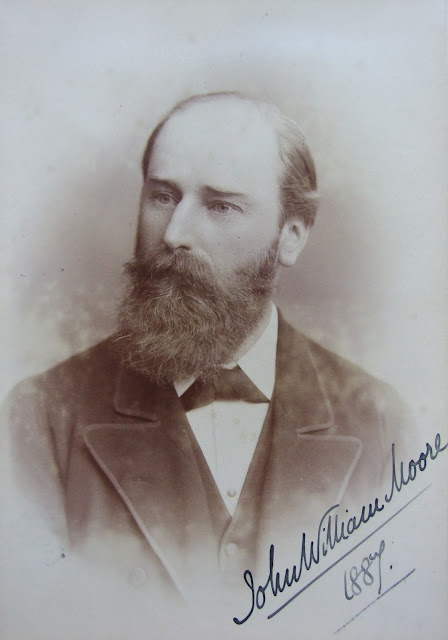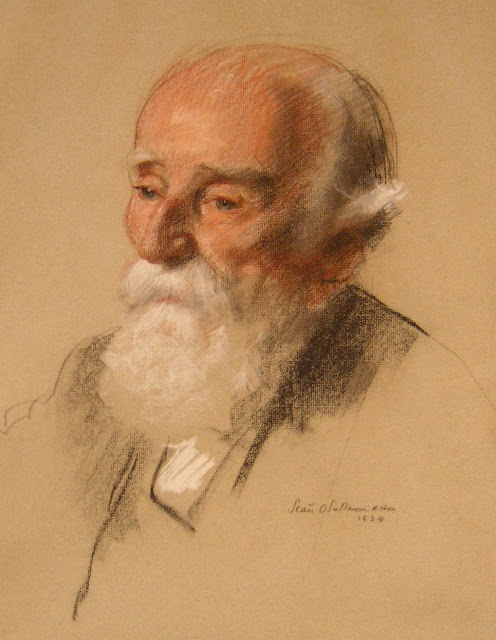Meteorology, Medicine and Moore
The last month in Ireland has been dominated by strong winds and heavy rain, bringing flooding to many areas of the country. The study of the weather and, especially, its impact on health has been of interest to physicians for centuries. One of the leading proponents of this study in Ireland was Sir John William Moore.
In the seventeenth century the British physician Thomas Sydenham, influenced by the works of Hippocrates, was studying the impact of the weather on epidemic diseases. Working at a time when new instruments for measuring atmospheric conditions were being invented, Sydenham and his successors were able to records and collate increasingly detailed meteorological observations. This period also saw the start of the fashion of keeping meteorological diaries, both by physicians and lay people. However, while the recording of meteorological data had improved, the observation of diseases was still limited to generalised statements. It would not be until the 19th century that systematic medical statistics were collated.[1]
John William Moore was born in 1845 into a family of doctors; he studied medicine at Trinity College Dublin, graduating in 1868. He worked as physician to the Meath Hospital from 1875 to 1933, was President of RCPI from 1898-1900 and was knighted for his services to medicine. In 1869, as a recent medical graduate, Moore began taking detailed meteorological readings from his home at 40 Fitzwilliam Square, a practice he continued until his death in 1937. His recordings and related correspondence,
now held in the Library of Met Éireann, provided the basis for numerous lectures, article and books by Moore.
 |
| John William Moore in 1887 (VM/1/2/M/19) |
In 1894 Moore published Meteorology. Practical and applied to fill the void he saw for a ‘popular yet scientific text-book on meteorology’. In the introduction to his work Moore states it to be ‘a labour of love’ for him, he apologies for not being an ‘author distinguished for scientific achievements’ and acknowledges the drawbacks of his role as physicians for its many ‘distractions’. He argues, however, that ‘the physician of all men has the fullest opportunities of observing the far-reaching influence of weather and climate upon human heath, happiness, and longevity’.[2]
Moore’s text book is divided into four sections; the first two deal with the instruments and methods needed for meteorological observations, Moore then looks at climate and weather, and finally draws on his own medical experience in looking at the impact of the climate on health. Which he hopes will help the development of both preventative medicine and state medicine. In this final section Moore provides a series of detailed tables and graphs showing the impact of meteorological factors (mean temperature, rainfall and humidity) on infectious diseases from influenza to smallpox. In the work Moore concentrates on Dublin, the city and climate he knew best, drawing on his own experience and the work of his contemporaries like Thomas Wrigley-Grimshaw. However, he also puts his findings into a European context, comparing his own findings and other doctors’ published works.
 |
| Sir John William Moore by Sean O'Sullivan, 1934 (RCPIP/46) |
Moore would, surely, have been interested in the cause, nature and effects of the storms which have been battering Ireland over the last few weeks. He might even have found in them sufficient points of interest to produce a follow up to his 1906 article for the Quarterly Journal of the Royal Meteorological Society entitled ‘The rainstorm of August 24-26, 2905, in eastern Ireland’. A storm Moore reports as being of ‘exceptional intensity’; he recorded rainfall of 3.436 inches in 24 hours at his house in Fitzwilliam Square, with an even higher 5.5 inches being recorded in Bray.[3]
[1] Roy Porter and W F Bynum, Companion encyclopaedia of the history of medicine, pp.296-300
[2] John William Moore, Meteorology. Practical and applied, pp.v-viii.
[3]Sir John William Moore, ‘The rainstorm of August 24026, 1905, in eastern Ireland’, pp. 1 and 4.